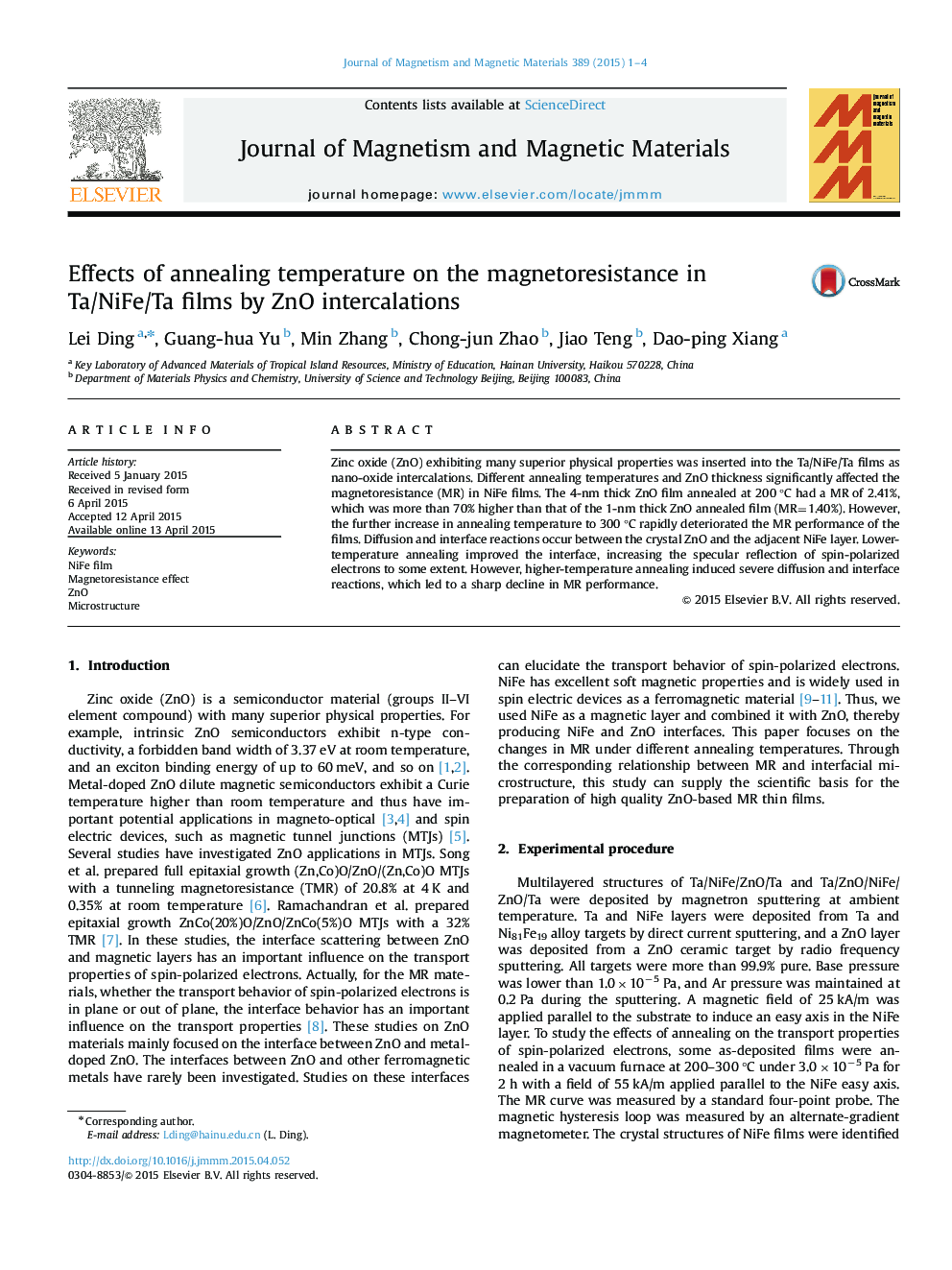| Article ID | Journal | Published Year | Pages | File Type |
|---|---|---|---|---|
| 1798916 | Journal of Magnetism and Magnetic Materials | 2015 | 4 Pages |
•Combining NiFe with ZnO, thereby producing NiFe/ZnO interfaces.•Investigating the effects of annealing temperatures on the magnetoresistance.•Explaining the corresponding relationship between MR and microstructure.
Zinc oxide (ZnO) exhibiting many superior physical properties was inserted into the Ta/NiFe/Ta films as nano-oxide intercalations. Different annealing temperatures and ZnO thickness significantly affected the magnetoresistance (MR) in NiFe films. The 4-nm thick ZnO film annealed at 200 °C had a MR of 2.41%, which was more than 70% higher than that of the 1-nm thick ZnO annealed film (MR=1.40%). However, the further increase in annealing temperature to 300 °C rapidly deteriorated the MR performance of the films. Diffusion and interface reactions occur between the crystal ZnO and the adjacent NiFe layer. Lower-temperature annealing improved the interface, increasing the specular reflection of spin-polarized electrons to some extent. However, higher-temperature annealing induced severe diffusion and interface reactions, which led to a sharp decline in MR performance.
